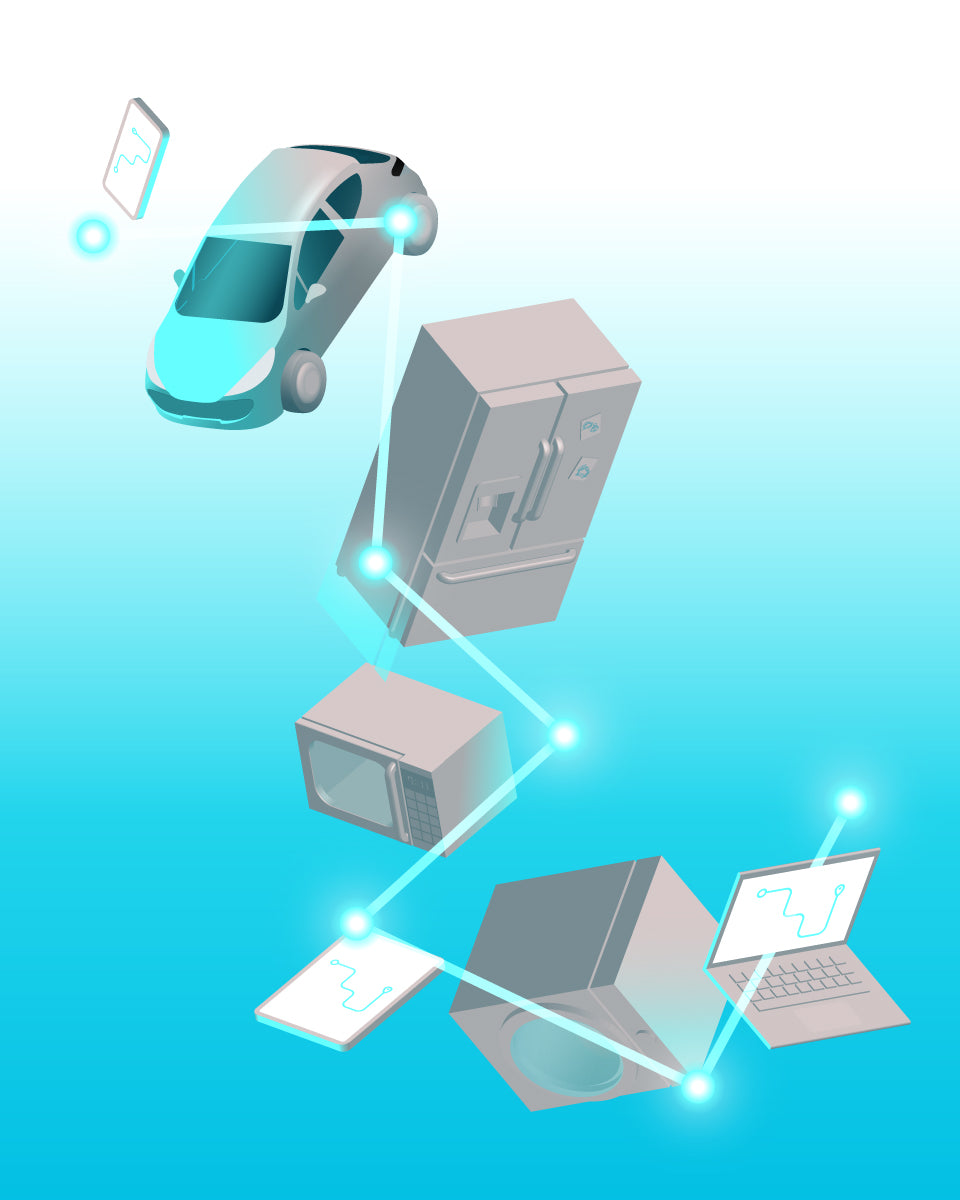Modern technology features plenty of devices that you normally would consider to be IoT, from toasters to refrigerators and more. While these can be very beneficial, they also carry risks, and consumers should be educated on what exactly IoT devices are, how they work, and the potential risks they carry.
What does IoT mean/stand for?
“IoT” is an acronym for “Internet of Things.” Any device that connects to another device over a network is classified as IoT. Most people are familiar with IoT devices like smart home hubs and car navigation systems, but IoT also covers more specialized devices like soil moisture sensors, heart monitors, and manufacturing equipment. IoT is not new technology–it’s been around at least two decades–and has received a lot of attention for how it’s changed nearly every aspect of people’s lives.
The reason it’s called “Internet of Things” is because unlike the regular internet, where most users are people, data in IoT is generated and received by machines. In fact, the first IoT device was a vending machine built by computer scientists at Carnegie Mellon University in 1982. They built it to report its inventory so that people could check if the machine had stock before giving it change.

How does IoT work?
IoT works the same way computers do, in that it connects to other devices over a network. But instead of an open network to the world wide web, they usually connect to specific devices within a closed network.
In the case of the soil moisture sensor, the information is collected and passed on to IoT-enabled irrigation systems, who can then water crops based on the aggregated data. This helps streamline large-scale farming and improves crop yields.
What are IoT devices made of?
All IoT devices need a connectivity chip in order to work. They’re very small and are getting smaller all the time, allowing them to be fit onto various devices and used in a number of civilian, industrial, medical, and scientific applications. For instance, researchers can now place chips on wild animals and monitor their migratory behavior.
What is an IoT cloud platform?
An IoT cloud platform allows the information collected by the connected devices to be stored in the cloud instead of a physical server or drive. While there are benefits in terms of data integrity and security, building server infrastructure is a complex challenge that only scales with the number of devices.
Is IoT secure?
Regular IoT devices are secure against casual access due to the nature of their closed networks. However, most IoT device owners don’t bother to change their network passwords and use the factory default. Malicious actors have been known to hack into these devices and use them in large-scale bot attacks.
There is also the matter of standardization and privacy. What kind of data are you comfortable giving away? How should that information be stored? Should convenience and innovation outweigh privacy and surveillance concerns?
How to secure your IoT device
There are a number of simple and practical measures you can take to immediately secure your IoT device from bad actors:
1. Change your device password
Like I said earlier, most of the security risk stems from device owners not changing the default passwords. Just the simple act of using a strong password can deter hackers who want easy targets. Current security conventions suggest using a long (way above 8 characters) pass phrase that is easy to remember, with occasional use of a special character or number.
2. Enable HTTPS/TLS encryption
Encrypting your device’s data is also a useful way to deter your average hacker, who doesn’t want to have to deal with the hassle of an encrypted device when there are thousands of better target elsewhere. Check your device’s settings or read the documentation for how to enable this setting.
3. Implement two-factor authentication
Two-factor authentication is an effective roadblock to any hacker who manages to get past your password protection. By linking it to your phone or email (or ideally a separate authentication device), you’re able to get notified if ever someone tries to access the device without your knowledge.
4. Update Device Firmware Regularly
IoT device manufacturers are constantly releasing new performance and security updates, so it’s a good idea to check for new firmware versions on a regular basis. This will both increase your device’s security and help optimize its performance.




Share:
Track GPS Location and History with Time Machine from Spytec
5 Benefits of Using A Mobile App for Asset Tracking